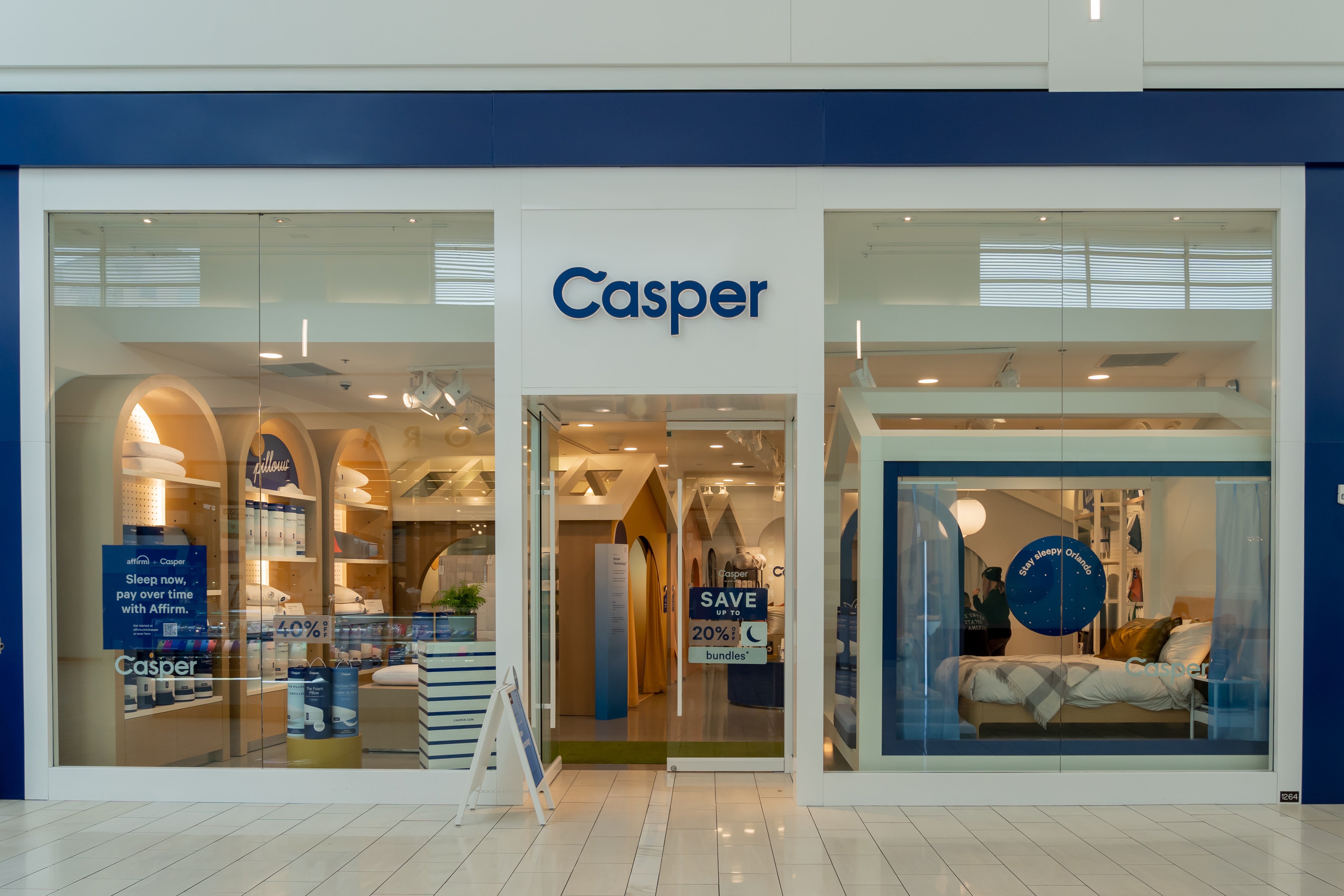Casper has been the first in so many realms: first to make a real splash in the direct-to-consumer mattress business, first to open stores, first to sell to third parties, first to go public, first to go back to private ownership under equity investors—and now, the first to be folded into a raw materials supplier that may or may not know what to do with it.
Now for the obligatory Casper pun: Do they have a ghost of a chance at making this work?
The sale of Casper to Carpenter Co. was announced in late October with most of the details (including price) left undisclosed. The buyer, a privately held company, says it does $1.6 billion a year, employing some 6,500 people and largely operating as a supplier of polyurethane foam and other synthetic fibers and chemicals to the furniture and commercial sectors. While Carpenter sells some branded goods direct to retailers and consumers, it is primarily an OEM supplier.
Casper—one of the brands Carpenter has been supplying recently—represents a departure from its core business. In announcing the deal, Carpenter said the brand would be operated as a subsidiary, and that the parent company “will assist Casper on a comprehensive growth and profitability strategy, as well as the appropriate future channels to market.”
Sounds reasonable enough: This is not the first time Casper has embarked upon a new strategy to boldly go where no other mattress company has gone before—not always so successfully.
When it initially entered the marketplace in 2014, Casper was not necessarily the first in the so-called bed-in-a-box category, where online shoppers ordered a foam mattress stuffed into a shipping carton that they opened like an oversize taco for the low, low price of $999. Returns were welcome—overly, it seemed sometimes—no questions asked. Even at its earliest stages, there were industry rumors that the brand had wild return rates well into the mid-double-digit range.
If Casper wasn’t exactly the first, it certainly was the leader in marketing—promoting in print, social media and even in New York subway cars—and the brand quickly became the darling of the then-newly home-conscious millennials. For many, it was their first direct-to-consumer purchase, before Warby Parker, Allbirds, or all the other startups that followed.
Before long, Casper again led the way in the DTC category when it moved to open its own stores, announcing plans to have as many as 200 locations (although it probably never got too far past 60 or 70). Investors touted the company as a billion-dollar unicorn and couldn’t wait to get a piece of the action.
Casper was far from done. Third-party distribution came next, first in a trendy, limited rollout to Pottery Barn. That was followed by much larger programs at Target and then Bed Bath & Beyond and Nordstrom, and eventually seemingly any number of other stores (one tally put the count at 27 points of retail distribution). Additional products were added—some logical extensions like sheets and pillows, as well as less obvious categories like lamps and new age sleep tech.
In February 2020, Casper’s investors decided it was time to cash in, and the company went public at $13 a share. What followed were several quarters of dismal earnings results as the stock gradually ticked down to under $5 a share. Less than two years later, Casper’s life as a public company ended when private equity investors Durational Capital bought it for $6.90 a share, which represented a 94 percent premium over its closing price at the time—about $308 million, all in.
Durational, like previous overseers of Casper, had big plans for the brand. “Durational brings a distinct approach to private equity by utilizing pattern recognition, nonlinear thinking and analysis, long-term strategies, and collaboration with best-in-class management teams,” the firm stated on its website at the time. Whatever that meant, it didn’t appear to change much about Casper’s visible presence in the marketplace.
Now it is Carpenter’s turn to use corporate-speak to proclaim what it will do with the brand. The entire mattress category has struggled since the pandemic, and if Casper’s performance has been lackluster over the past few years, it is not alone. Big players like Tempur-Sealy and Serta Simmons have not done great either.
Any turnaround for Casper—excuse us if we don’t bother counting which number this is—will depend first and foremost on the entire category. Casper certainly has a well-known brand and a base of customers who have purchased its products over the past decade. With the average lifespan of a mattress generally projected at under 10 years (foam versions probably have an even shorter shelf life), those customers could be ready to come back to Casper, assuming they have had a good experience.
Expanding the Casper assortment up the mattress food chain to more premium versions would certainly seem to be an option, although as a foam supplier, Carpenter doesn’t have much standing in the more upscale sector of the business. Wider distribution and extensions into allied products may not have much room to grow either, given the current market.
It's quite probable that Carpenter didn’t put much of a dent into its balance sheet with its acquisition, so the risk factor is probably modest. The mattress brand has been a pioneer in so many areas throughout its relatively brief history. One has to hope that Casper’s future will—wait for it—be a friendly one.
____________
Warren Shoulberg is the former editor in chief for several leading B2B publications. He has been a guest lecturer at the Columbia University Graduate School of Business; received honors from the International Furnishings and Design Association and the Fashion Institute of Technology; and been cited by The Wall Street Journal, The New York Times, The Washington Post, CNN and other media as a leading industry expert. His Retail Watch columns offer deep industry insights on major markets and product categories.





























